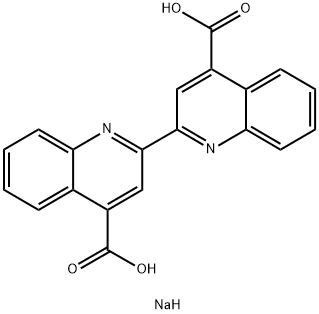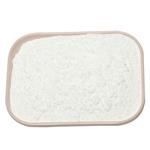Description
2,2’-Biquinoline-4,4’-dicarboxylic acid (BCA) is a colorimetric reagent for the detection of copper (Cu
+). BCA and Cu
+ form a stable 2:1 complex that has an absorbance maximum at 562 nm. It is commonly used as a reagent in the colorimetric BCA protein quantitation assay in which Cu
2+ is converted to Cu
+ as a function of protein concentration under alkaline conditions.
Chemical Properties
White to light yellow powder.
IUPAC Name is disodium [2,2'-biquinoline]-4,4'-dicarboxylate
Uses
For determination of Cu and protein assays.Bicinchoninic acid disodium salt is useful for the determination of copper. It is also used for the determination of protein concentration.
Uses
- Bicinchoninic acid disodium salt hydrate has been used to monitor the levels of reducing sugars, thereby helping in the detection of chitinases.
- It has also been used to determine the amount of cellulose reducing ends (micromoles/g cellulose).
- It has been used for determining protein concentration.
Application
2,2'-Bicinchoninic Acid Disodium Salt is a photometric reagent for protein assay. It is used for determination of reducing sugar and protein via Cu(I). Also a specific reagent for Cu(I) with sensitivity similar to that of neocuproin.
Biochem/physiol Actions
Bicinchoninic acid is used for the determination of protein concentration. It is responsible for the making of intense purple complex with cuprous ion (Cu+), in presence of alkaline conditions. The amount of Cu+ is in relation with the protein concentration.




